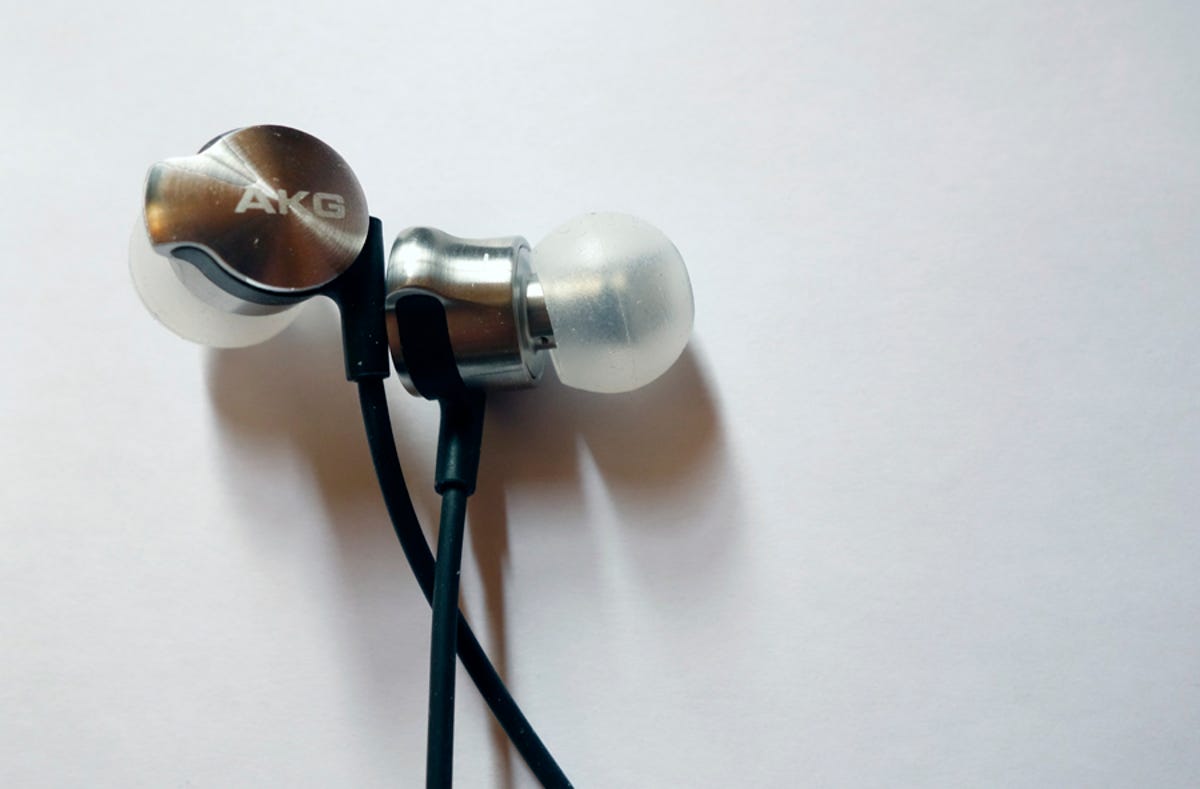
Steve Guttenberg/CNET
Even before you pop the AKG K3003i into your ears you know something’s up. The beautifully finished metal earpieces look and feel expensive, so the K3003i is priced like the high-end product that it is.
The K3003i sounds more dynamically alive than any other universal fit in-ear headphone I’ve tried. If you get to check out a pair of K3003is, listen to Antonio Sanchez’ drum solos on the “Birdman” film soundtrack album, and you’ll hear what I’m talking about. The K3003i’s tremendous kick and impact are well ahead of the sound of Sennheiser’s flagship IE800 in-ears. That one reins in the crack of the snare drum, cymbals lose some luster, and the entire drum kit’s energy level is diminished, but the K3003i liberates it.
Moving onto Bob Marley’s “In Dub” album, both headphones uncorked massive bass grooves, but the K3003i’s bass was a couple of shades better in terms of definition. It was also easier to hear Marley’s entire rhythm section working together. Again, it was the K3003i’s freewheeling dynamics that made the difference.
The K3003i’s stereo imaging sounds closer to a full-size over-the-ear headphone; it’s less inside my head than most in-ear designs. Individual instruments and vocalists are more precisely focused across a wide soundfield. That’s a biggie for me — most in-ears sound closed-in and small, but the K3003i does not.
The design is rather unusual, even by high-end standards. The K3003i’s features a dynamic bass driver and two balanced armature drivers in each earpiece. AKG isn’t forthcoming with any further details about the driver configuration. One specification that jumped out was the K3003i’s impedance, it’s just 8 ohms, that’s the lowest I’ve seen for an in-ear headphone. That may account for the K3003i’s preference for something better than iPods or cellphones as music players, so I used a FiiO X5 portable music player for most of my listening tests. The K3003i has a mic and three-button phone remote, the otherwise identical K3003 has a plain cable without the mic and remote (I used the K3003 for all of my listening tests).
You can fine-tune the K3003i’s tonal balance with the AKG filters that screw onto the earpieces’ nozzles; I liked the “Reference” filter best, but you might prefer the Bass Boost or Treble Boost filters. I tried all three, and they each made a noticeable difference in the K3003i’s sound. The headphone comes with a square leather carry case that will definitely protect the headphone when you travel with it.
The JH Audio Roxanne is my favorite in-ear headphone, so I was eager to see how the K3003i fared in a direct face-off. The Roxanne is a super dynamic-sounding headphone, but on Bjork’s new “Vulnicura” album (in high-resolution 96/24 audio) the K3003i’s bass clarity surpassed the Roxanne’s! That headphone sounded warmer/richer, making it better suited to rock or any high-energy music. With purely acoustic music like Yo-Yo Ma’s bluegrass infused “The Goat Rodeo Session” album I preferred the K3003i. The clarity is truly remarkable, and the tonality of the instruments was spot-on. The Roxanne was also superb in that department, and it does a much better job blocking external noise than the K3003i.


Steve Guttenberg/CNET
The biggest downside to the K3003i’s sound is the way it highlights recording flaws; aggressively compressed and harsh recordings will sound more so than they do on other in-ear headphones. You can tame the harshness by using the Bass Boost filter, but then you’ll lose some of the K3003i’s clarity. Listening to the Beastie Boys “The Mix Up” album, the K3003i’s with the Reference filters the sound was borderline grating.
So the question is: Can you handle the truth? Perhaps the K3003i will tell you more than what you want to know about the sound of your favorite music.
I was more aware of the K3003i in my ears than I am with most in-ears. I couldn’t achieve a good fit with the silicone tips that come packed with the K3003i. That may be just me, my ear canals are larger than average, and the silicones’ fit might be perfectly fine for the majority of K3003i owners. It bears repeating that fit and comfort with all headphones varies; no headphone is ideal for every wearer. After some experimentation I found the tips from my Hifiman RE600 headphones on the K3003i provided a better fit.
One other concern is the K3003i’s cables aren’t user replaceable. If they break you’ll have to return the headphone for service to AKG. That said, if you treat the headphone with the same care you would with an expensive camera, the K3003i should provide many years of service.
The AKG K3003i has a $1,499 MSRP, but sells for $979 in the US on Amazon, £833 in the UK, and AU$999 in Australia. Right, the K3003i is really expensive, but the superlative sound quality — with great recordings — may justify the price for well-heeled audiophiles. Then again, if you’re searching for a universal-fit in-ear headphone that makes all of your music sound great, I’d suggest the Sennheiser IE800 or Shure SE846.



